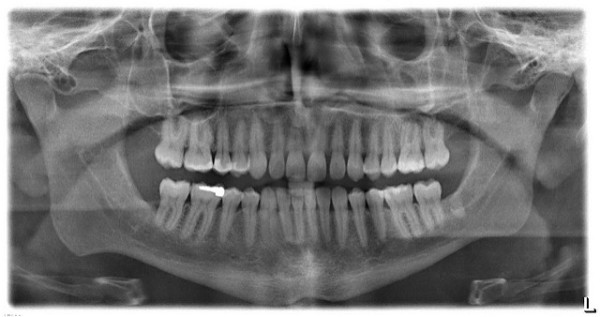If there are 50 shades of grey anywhere, it is probably in Mr. Grey’s dental X-rays (given the amount of coffee he consumes). The shades of dental X-rays may bring different sentiments other than love, such as denial, dread, confusion, relief, or even, curiosity. After all, X-rays capture what we cannot see.
Image Source: Andresr
Types of Dental X-Rays:
The two biggest categories of dental X-ray are intra-oral X-rays and extra-oral X-rays. Intraoral X-rays are mostly likely the ones you have taken; they focus on the health of your teeth, root and jawbone. Extraoral X-rays, on the other hand, highlight jaw or skull health and show whether an individual has TMD (Temporomandibular Disorder) or impacted teeth.
To catch disease developments early, a type of intraoral X-rays dental offices typically take once a year is called bite-wing X-ray. Bite-wing X-rays detect cavities and changes in bone density. Additionally, if cavities or gum disease are suspected, a periapical X-ray may be taken to see the whole tooth. These procedures are so important that most insurance companies cover them at 100% once per year.
The most common type of extra-oral X-ray is the panoramic X-ray which shows all teeth and jaws on a single X-ray image presenting problems like impacted teeth and tumors. This is especially important for a new patient.
The Big Elephant in the Room: Dental X-ray Technology and Safety
Before we delve into the safety of dental X-rays, let’s reveal some of the facts about X-rays that are not commonly known. Everyone experiences a certain amount of background radiation. Because of less protection from Earth’s atmosphere, those living in higher elevations, such as pilots or frequent flyers, experience more X-ray exposure from cosmic rays. The Earth itself also contains naturally radioactive rocks and soil that may be used in buildings, present in water, or even plants. Even reading a book (1 mrem per year) or cooking (10 mrem per year) can expose you. The National Council on Radiation Protection (NCRP) states that on average, a U.S. resident is exposed to 360 mrem every year from background sources which is completely safe. One dental X-ray typically expose an individual to only 2-3 mrem per year! With better technology like the digital radiograph, there is even less to worry about. Do not let the fear of radiation stop you from taking care of your oral health.
Understanding the Lingo of Reading X-Rays
While “cavities” is one of the most commonly heard terms, many other diagnoses from X-rays are also equally important. Did the doctor say that your X-ray shows you have a malocclusion, or misalignment of your set of pearly whites? Hopefully, you do not have a tooth abscess, an untreated tooth decay or a crack in a tooth that allowed bacteria to infect the center of the teeth or even the roots. Root canals may be recommended to save the tooth, or in more severe cases, an extraction may be required. What about an impacted tooth, a tooth that did not erupt (or only partially erupted) from the gums? That means your wisdom teeth, if present, may be impacted and require an oral surgeon for removal.
I hope your curiosity is quenched and you can better appreciate your dentist and your 50 shades of grey!
Feature Image Source: Dental X-ray by icethim










